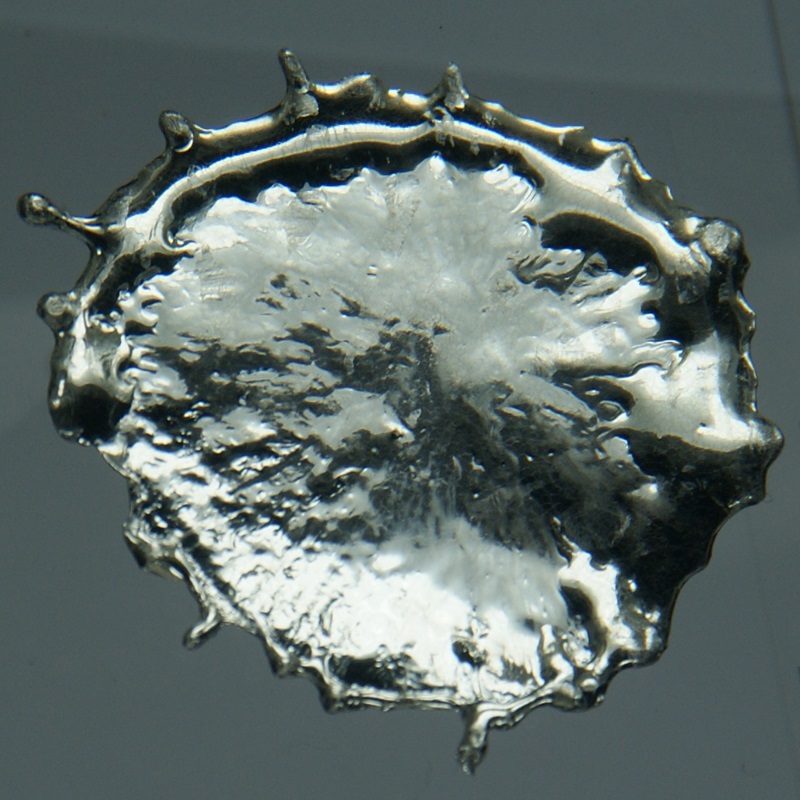Staniu
50
Sn
Grupă
14
Perioadă
5
Bloc
p
Protoni
Electroni
Neutroni
50
50
69
Proprietăți Generale
Număr atomic
50
Masă atomică
118,71
Numar de masa
119
Categorie
Metale post-tranziţionale
Culoare
Argint
Radioactive
Nu
Cuvântul latin stannum, staniu
Structură cristalină
Centrat Tetragonal
Istoric
Staniul a fost topit pentru prima dată în combinație cu cuprul în jurul anului 3500 î.Hr. pentru a produce bronz.
Cele mai vechi artefacte datează din jurul anului 2000 î.Hr.
Casiteritul, forma de oxid de staniu, a fost cel mai probabil sursa originală de staniu în antichitate.
Omul de știință britanic Robert Boyle a publicat o descriere a experimentelor sale privind oxidarea staniului în 1673.
Cele mai vechi artefacte datează din jurul anului 2000 î.Hr.
Casiteritul, forma de oxid de staniu, a fost cel mai probabil sursa originală de staniu în antichitate.
Omul de știință britanic Robert Boyle a publicat o descriere a experimentelor sale privind oxidarea staniului în 1673.
Electroni pe nivelul de energie
2, 8, 18, 18, 4
Configurație electronică
[Kr] 4d10 5s2 5p2
Când o bară de staniu este îndoită, se poate auzi un sunet de crackling cunoscut ca țipătul staniului
Proprietăți Fizice
Fază
Solid
Densitate
7,287 g/cm3
Punct de topire
505,08 K | 231,93 °C | 449,47 °F
Punct de fierbere
2875,15 K | 2602 °C | 4715,6 °F
Energie de fuziune
7 kJ/mol
Energie de evaporare
290 kJ/mol
Căldură specifică
0,228 J/g·K
Abundența în scoarța Pământului
0,00022%
Abundența în Univers
4×10-7%

Numarul CAS
7440-31-5
Număr CID PubChem
5352426
Proprietăți Atomice
Rază atomică
140 pm
Rază de covalență
139 pm
Electronegativitate
1,96 (Scara lui Pauling)
Potențial de ionizare
7,3439 eV
Volum molar
16,3 cm3/mol
Conductivitate termică
0,666 W/cm·K
Număr de oxidare
-4, 2, 4
Aplicații
Staniul este utilizat ca acoperire pe suprafața altor metale pentru a preveni coroziunea.
A fost utilizat mult timp ca lipitură sub formă de aliaj cu plumb.
Sărurile de staniu pulverizate pe sticlă sunt utilizate pentru a produce acoperiri conductoare electric.
Clorura de staniu este utilizată ca mordant în vopsirea textilelor și pentru creșterea greutății mătăsii.
A fost utilizat mult timp ca lipitură sub formă de aliaj cu plumb.
Sărurile de staniu pulverizate pe sticlă sunt utilizate pentru a produce acoperiri conductoare electric.
Clorura de staniu este utilizată ca mordant în vopsirea textilelor și pentru creșterea greutății mătăsii.
Staniul este considerat a fi netoxic, dar majoritatea sărurilor de staniu sunt toxice
Izotopi
Izotopi stabili
112Sn, 114Sn, 115Sn, 116Sn, 117Sn, 118Sn, 119Sn, 120Sn, 122Sn, 124SnIzotopi instabili
99Sn, 100Sn, 101Sn, 102Sn, 103Sn, 104Sn, 105Sn, 106Sn, 107Sn, 108Sn, 109Sn, 110Sn, 111Sn, 113Sn, 121Sn, 123Sn, 125Sn, 126Sn, 127Sn, 128Sn, 129Sn, 130Sn, 131Sn, 132Sn, 133Sn, 134Sn, 135Sn, 136Sn, 137Sn